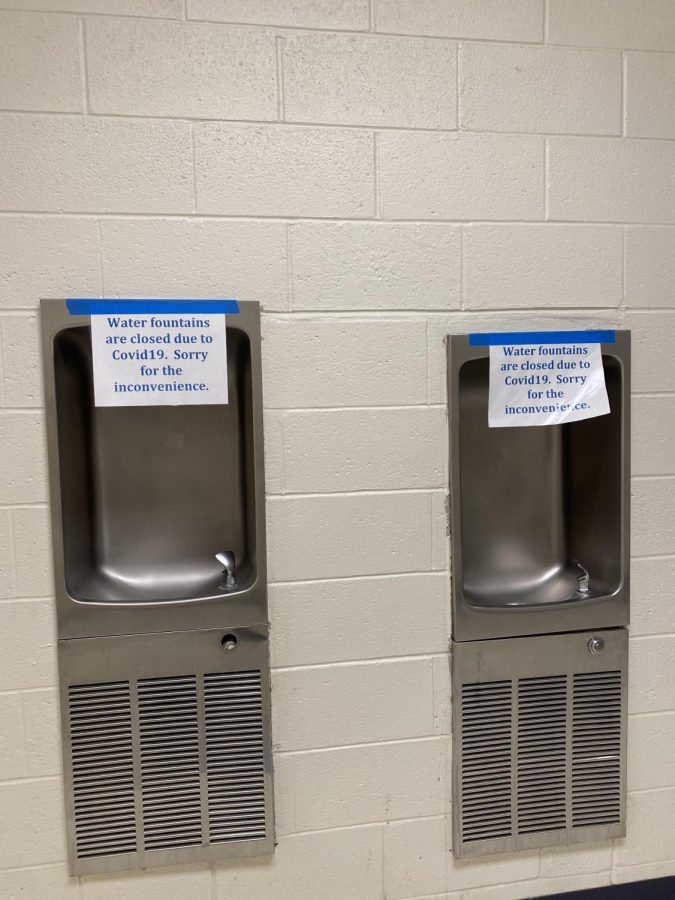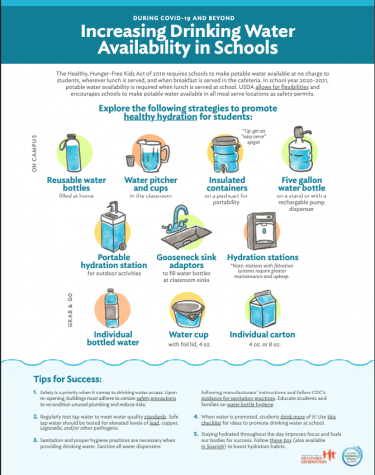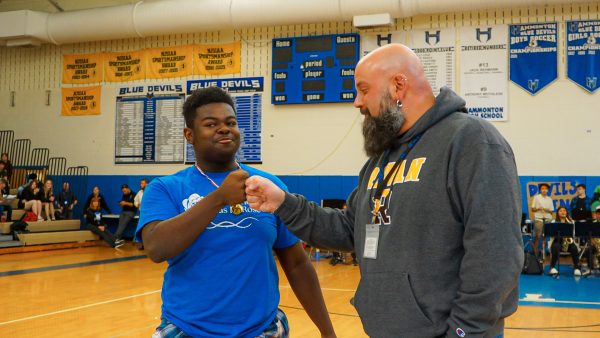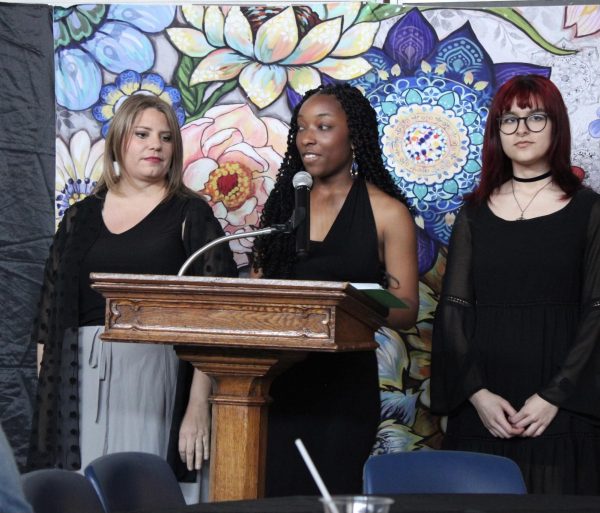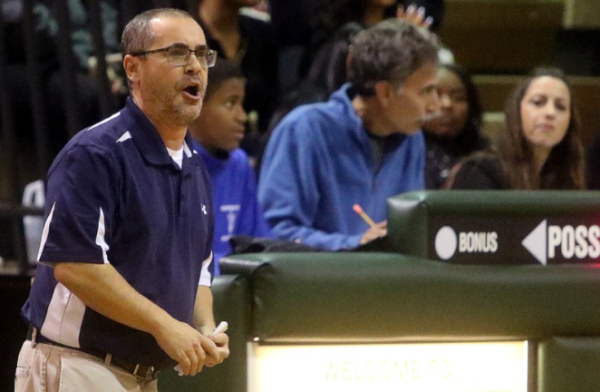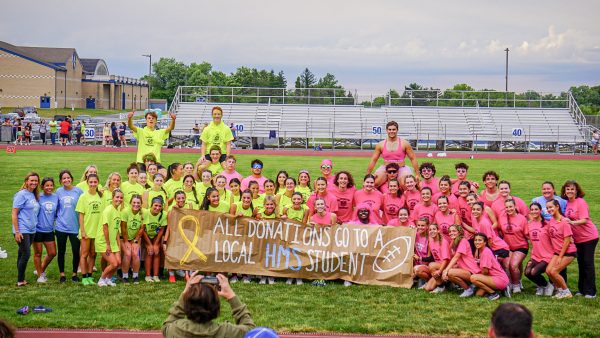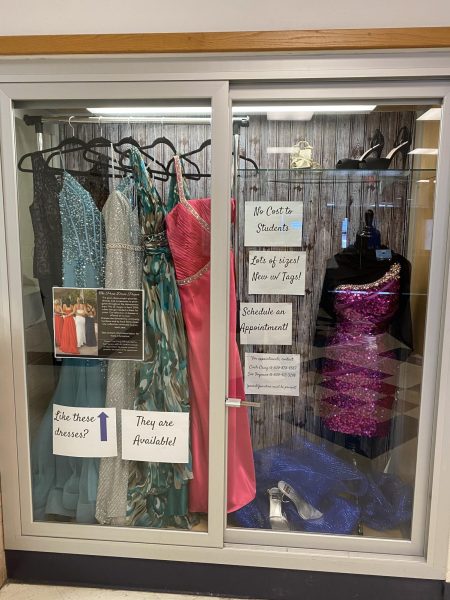Where’s the Water?
Students struggle to find water throughout the school day
As Mr. Goldman explained how to calculate the speed of light, junior Dominic Alber couldn’t focus. He was thirsty.
It wasn’t that Alber, didn’t come to school prepared. Each morning, he grabs a water bottle out of the fridge on his way out the door, which is normally consumed over the course of an hour.
“I have to pace myself,” he said. “I don’t have lunch until Period 7, so it has to last until then.”
Alber isn’t alone in his struggle. Finding water in the building is difficult and continues to be a challenge.
Why? Since schools reopened during the COVID-19 pandemic, water access for students has been limited. Above each water fountain in the hallways, a sign appears that reads “Water fountains are closed due to COVID19. Sorry for the inconvenience.”
So what have students been doing when they need water? The most common and simplest thing students and teachers do is bring their own bottle or Hydroflask.
If students ever run out of water, they head to the nurse’s office and ask for a refill. For students who forget to bring a bottle that day, however, things are a bit more challenging.
Nurse Christine Haines acknowledges some of the risks associated with communal water sources like water fountains.
“Closing the fountains cuts back on students staying too close together and removing their masks while near each other,” she said in an email correspondence.
Access to clean drinking water is very important to one’s health, she added. She referred to the CDC’s article on Water Access in Schools, which cites research-based evidence about the impact of drinking water.
According to the site, “[p]roviding access to drinking water gives students a healthy alternative to sugar-sweetened beverages. It helps to increase students’ overall water consumption, maintain hydration, and reduce energy intake if substituted for sugar-sweetened beverages. Adequate hydration also may improve cognitive function in children and adolescents. Drinking water, if fluoridated, also plays a role in preventing cavities.”
While finding water is important throughout the day, it is especially needed during lunch times in the cafeteria, where the only current free option included with the meal is milk or juice. Water is only available for sale, which means that students without extra money cannot get water.
The USDA Food and Nutrition Service’s memorandum contains twenty school service related questions and answers related to school services during COVID. On question 13, USDA writes it is required to make drinking water available during meal service.
Hammonton High School’s Food Service department, which always relied on access to water fountains during lunch, is looking for ways to meet these federal guidelines.
The Head of Food Services, Ms. Heather Triboletti, is aware that the guidelines require students to have access to potable water, and she is in the process of looking for options.
“Some schools are using water jug dispensers in the cafeteria. There’s also the option of getting mini water bottles,” she said.
Triboletti and others are working hard to have the issue resolved.
Not only has water access been an issue during the school day, but it also proves challenging for those who participate in athletics. Senior Grace DeRosa, who played tennis in the fall, said it was a struggle.
“During sports seasons, you have to bring multiple water bottles to last you through the day, and during practice and matches. We’d go on runs at practices and it would be 90 degrees in September, and we couldn’t drink any water,” she said.
DeRosa acknowledged that the athletic trainer’s office had water available for those in need.
“Although the trainer’s office has water, we have to walk all around the building to get to her office through the back door and lose practice time. She’s not always there because she’s out and about working with the teams.”
Water fountains are available in the locker rooms, but they all have signage that they are not to be used. Others, like the ones in the hallway, are shut off.
Ms. Sharon Murray, the Director of Facilities, said in an email that most of the information the school works with comes from the CDC.
She referenced the CDC’s COVID-19 Employer Information website, which directs facilities to “encourage staff to bring their own water to minimize use and touching of water fountains or consider installing no-touch activation methods for water fountains” and to clean all high touch surfaces frequently.”
The site, however, does not explicitly state the fountains should be closed.
No-touch activation methods, including bottle fillers instead of traditional fountains or a water dispenser in the cafeteria, provide schools with additional options that could solve this issue.
However, at the time press, these options are not currently available to the student body.
Until then, students will be hoping they don’t get too thirsty.

